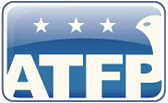| Office for the Coordination of Humanitarian Affairs (OCHA) |
10 November 2009
|
Implementation of the Agreement on Movement and Access
and Update on Gaza Crossings
(28 Oct - 10 Nov 2009)
The United Nations is submitting the 104th bi-weekly report on the implementation of the 15 November 2005 Agreement on Movement and Access (AMA)1, covering the period 28 Oct - 10 Nov 09 (Annex)2. In light of the closure of Gaza, this report also monitors movement and access through other crossings not included in the AMA.
Summary:
AMA Benchmarks:
- • Rafah crossing has remained closed for the movement of people for 885 working days. It was last open for public use on 09 June 2007. However, the crossing was partially open on an exceptional basis for passengers on 13 days during the reporting period, compared to 12 in the previous reporting period, allowing 7,211 authorized Palestinians, including 4,228 pilgrims, medical cases and students to cross out, and 1,183 to cross in, compared to 106 departures and 878 arrivals in the previous reporting period.
• Karni crossing has remained closed since 12 June 2007 for the movement of goods in and out of Gaza. The conveyor belt/chute for cereals and animal feed was open on three days (02, 04, and 09 Nov), the same as during the previous reporting period. A total of 306 truckloads of cereals and animal feed entered Gaza via the conveyor belt, compared to 254 in the previous reporting period. Neither gravel nor bulk cement were allowed entry during this period. Gravel and bulk cement were last allowed into Gaza on 26 and 29 Oct 08 respectively.
• Erez crossing has remained closed for more than three years since 12 March 2006 for workers, and more than two years, since 12 June 2007, for all other Palestinians, except for a limited number of Palestinian senior traders, aid workers and medical cases who have been granted special permits. For these persons, Erez crossing was partially open on 12 days. An average of one trader was allowed out per day during the reporting period, and an average of 27 medical cases per day were allowed to cross out, compared to an average of 28 during the previous reporting period.
• Obstacles to movement in the West Bank has remained at 579 the same as during the previous reporting period. Overall, the figure 579 represents an increase of 203 obstacles (54.0%) over the baseline figure (376) of August 2005.
• Convoys between the Gaza Strip and the West Bank:
- Truck convoys Implementation now 45 months overdue (since mid-January 2006).
Bus convoys Implementation now 46 months overdue (since mid-December 2005).
• Ports:
- Seaport Awaiting GoI assurance of non-interference with the seaport operation.
Airport Awaiting commencement of discussions since November 2005.
Non-AMA Crossings:
- • Sufa crossing was not open during the whole reporting period. It was last open on 12 Sept 08. In mid March 09, Israel announced that Sufa crossing is no longer a crossing point between Gaza and Israel.
• Kerem Shalom crossing was partially open on 10 days, the same as during the previous reporting period. A total of 840.5 truckloads of goods including 116.5 for humanitarian aid agencies were allowed in, compared to 797.5 during the previous reporting period. A total of 290 tonnes of cooking gas and 2,098,080 litres of industrial fuel for the power plant, were transferred through the pipelines.
• Nahal Oz fuel pipelines were partially open on 04 out of the 10 scheduled days, compared to 03 days during the previous reporting period. 575 tonnes of cooking gas and 2,306,290 litres of industrial gas for the power plant were allowed through. In addition, 49,350 litres of petrol and 302,000 litres of diesel were allowed entry for UNRWA.
• Of note: Overall, 1,122.5 truckloads, including 116.5 truckloads from humanitarian agencies were allowed entry to Gaza during this period, compared to 1,094.5 truckloads allowed in during the previous reporting period. A total of 865 tonnes of cooking gas and 4,404,370 litres of industrial gas were allowed to enter (Nahal Oz and Kerem Shalom crossings), compared to 821 tonnes and 4,661,580 litres respectively, during the previous reporting period.
_____________
1 The United Nations, through the OCHA oPt office, has assumed reporting responsibilities for reporting on the implementation of the AMA since April 2006.
2 The AMA was negotiated by US Secretary of State Condoleezza Rice, between the Government of Israel and the Palestinian Authority to promote peaceful economic development and improve the humanitarian situation on the ground. It represents the commitments of both the Government of Israel and the Palestinian Authority to facilitate access and movement into/out and throughout the West Bank and Gaza Strip.
Phone: +972 (0)2 5829962 / 5825853 | Fax: +972 (0)2 5825841
www.ochaopt.org
UN Office of the Special Envoy for Disengagement - November 10, 2009 - Back to Resources Page
Did we miss something?
Click here to suggest a state building resource to be added to our fast-growing archive!
















